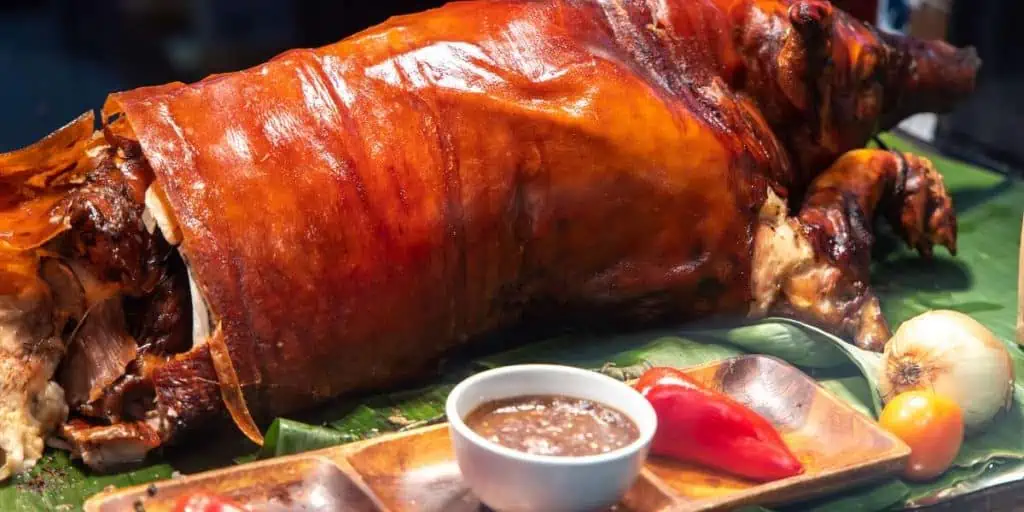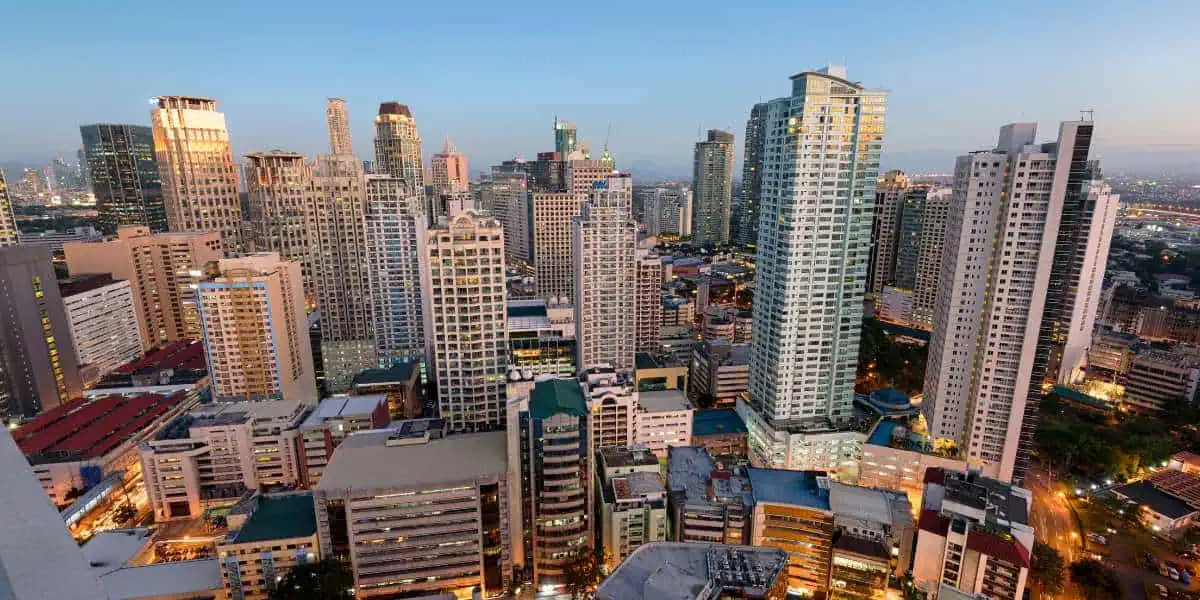Discover the rich tapestry of Manila’s cultural heritage through its colorful festivals and enduring traditions. From raucous street parties to solemn religious processions, immerse yourself in the Philippines’ capital and its captivating spirit.
Manila boasts a unique blend of Spanish, Malay, Chinese, and American influences that shape its one-of-a-kind culture. Explore this vibrant mélange through events like the Sinulog festival, the Black Nazarene procession, and the Flores de Mayo. Delve deeper into age-old traditions like fluvial parades, cockfighting, and the community spirit of bayanihan.
Top it all off with iconic Filipino fare like crispy lechon, soothing halo-halo, and the mighty adobo. Then engage with Manila’s warm locals as you unveil the soul of this fascinating city. Join the festivities now!
Manila’s Festivals: A Riot of Colors, Sounds, and Traditions
Manila celebrates a roster of spectacular festivals all year round that give visitors a glimpse into the city’s multifaceted culture. These raucous and colorful events blend Catholic rituals with Filipino folklore for a vibrant cultural display.
Sinulog Festival – Cebuano Culture on Full Display
The Sinulog festival held every third Sunday of January is a dazzling display of Cebuano culture. Meaning “like water current movement,” it honors the Santo Niño icon. The highlights are the Sinulog dance contest and the fluvial procession.
Participants wearing bright costumes dance to the beat of drums and native gongs in tribute to the Holy Child. Witness amazing psychedelic choreography along Manila’s parade routes. Meanwhile, the fluvial procession on Manila Bay features the Santo Niño icon adorned on festive watercrafts.
Sinulog shows how precolonial animist rituals fused with Roman Catholic rites brought by the Spaniards. An iconic Pinoy way to kickstart the year!
Feast of the Black Nazarene – An Ocean of Maroon Faith
Every January 9th, Manila rumbles with the Feast of the Black Nazarene. Millions of Catholic devotees wearing maroon shirts merge on the streets of Quiapo to catch a glimpse and touch the life-sized black statue of Jesus Christ carrying the cross.
The image purportedly bears miraculous healing powers, prompting frenzied worshippers to push and shove amid the thick maroon sea. You’ll witness extreme religious passion as people squeeze themselves through the procession waving white towels pleading for their dreams and petitions.
The risky practice shows Filipinos’ unwavering faith despite difficult personal circumstances – a true testament of hope. Make sure to wear closed shoes and avoid bringing valuables if you join the grueling parade.
Flores de Mayo – Flowers of May Spring Celebration
The Flores de Mayo is a month-long Mayspring festival celebrated across the Philippines with parades, masses, and food fairs. But Manila’s festivities from May 1-31 take the flower-bedecked cake.
It starts with ritual dancing and prayers to ask for a bountiful harvest from the town’s patron saint. Little girls dressed as angels in lacy gowns scatter flowers along the procession route. Witness the rich floral decor as locals turn parks and churches into flower gardens befitting heaven’s messengers.
Each day has feasting on Filipino fare and games for the kids. But the Santacruzan parade finale on May 31 is the most extravagant floral display to behold in Manila. Named after biblical beauty queen Helena’s search for Christ’s cross. Make a flower girl’s day by catching treats thrown from lavishly decorated carriages!
Deepening the Cultural Connection: Manila’s Enduring Traditions
Beyond Manila’s loud and flashy festivals are centuries-old traditions quietly pulsating within communities. These enduring practices illuminate intimate Filipino values around family, faith, and solidarity in the face of hardship.
Fiesta Fluvial Parades – Seafaring Devotion
Before grand Sinulog parades, Filipino villagers already honored their patron saints through the fiesta fluvial tradition. Communities deck out boats and ships with flowers, flags, and icons then float along nearby waters in a seaborne procession.
In Old Manila, fiesta fluvials commemorate how the Blessed Virgin reportedly sheltered citizens through storms and wars by sailing her image around the city.
Meanwhile in Pasig, large Balangay replica boats join the procession, showcasing how ancient Filipinos sailed from Borneo and became the first inhabitants of Manila. Catch these symbolic pageants along the Pasig River and Manila Bay highlighted with spectacular fireworks displays!
Cockfighting – Bloodsport Reflecting Everyday Struggles
Cockfighting or “sabong” in Filipino, is an age-old bloodsport pitting roosters with bladed gaffs tied to their legs in a fight to the death. It may appear cruel to foreigners but sabong holds an important place in Philippine culture.
Filipinos relate to how roosters bravely face opponents twice their size despite difficult odds, mirroring people facing crushing poverty.sabong arenas from small barangay cockpits to posh coliseums, provide cathartic entertainment and dream-fueling jackpots for struggling Filipinos.
While sabot is mainly for locals, foreigners can glimpse Filipinos’ grit and ingenuity through this controversial pastime. Just don’t take photos of the actual fights as it’s considered rude even among Pinoys.
Bayanihan – Lifting Each Other Up During Hard Times
Bayanihan is an age-old tradition reflecting Filipinos’ resilience and solidarity through adversity. It refers to an entire village volunteering to literally carry families’ entire houses to a nearby location. This communal effort eases local migrations without leaving anyone behind.
In modern times, bayanihan persists through neighborhood charity works and cooperatives that empower locals. Witness bayanihan firsthand through community pantries spontaneously created to feed jobless Manileños during the pandemic lockdowns.
Despite crushing hardships, Filipinos buoy each other’s spirits through bayanihan – showcasing the best of Philippine culture to the world.
A Culinary Odyssey: Manila’s Gastronomic Delights

Filipino cuisine beautifully reflects the country’s trade history with dishes fusing native, Chinese, and Spanish influences. Treat your tastebuds to an epic Pinoy food journey through iconic Manila specialties!
Adobo – The Mighty Braised Chicken or Pork Dish
No list is complete without adobo – the quintessential Filipino dish. Its braised meat cooked in vinegar, soy sauce, garlic and peppercorns dish packs a sumptuous salty-sour punch that tingles your tongue.
Chicken, pork or even seafood can feature in this versatile staple dish. But purists swear by pork and chicken combinations slow-braised to perfection. Adobo makes economical ingredients shine from streetside eateries called “karinderias” to high-end restaurants.
With adobo on the table, every meal becomes a mouthwatering celebration of the Filipino spirit on your plate!
Lechon – Manila’s World Famous Roast Pig
Crunchy skin with fork-tender meat, lechon is the Philippine’s ultimate comfort food celebrated from fiestas to weddings as a status dish. And when it comes to lechon, Manila leads the charge as the country’s roasting capital.
From backstreet joints in La Loma to five-star hotel buffets, sink your teeth into Manila’s signature roast pig and you’ll discover why Anthony Bourdain featured it thrice on No Reservations. The secret lies in cooking it with stuffed lemongrass or on a rotisserie to achieve ultra crispy porcine perfection. Enjoy it Cebu-style with spicy vinegar dip for full Pinoy experience!
For the juiciest lechon cut, book weeks in advance to secure prime belly, ribs, or even the decadent face meat!
Halo-Halo – Iconic Fusion Dessert with Rainbow Toppings
Cool your tastebuds after those savory dishes with the Philippines’ iconic halo-halo dessert which means “mix-mix.” Layers of colorful ingredients like flan, jelly cubes, and Boa hides a secret – the sweet beans, cream, and crushed ice base!
Though seemingly unrelated, these components deliver heavenly harmony with every spoonful. Halo-halo is another edible metaphor for Filipinos’ knack for fusing different cultures as seen in the diverse Chinese, American, and Malay ingredients.
For the complete experience, have Manila’s master dessert-makers customize your mix or go crazy with the DIY toppings to channel your inner Pinoy!
Unveiling the Soul of Manila: Engaging with its People and Communities
To truly immerse in Manila’s intoxicating culture, go beyond top attractions and engage deeply with locals. See Manila through their eyes while respecting age-old customs. Here are insightful ways for meaningful travel.
Salubungan – Witnessing History in the Making
Every January 9 morning, history unfolds at Rizal Park as the Black Nazarene traslación and procession meet in a ritual called “salubungan.”
Statues of the seated Black Nazarene and the standing Jesus Christ face other surrounded by a sea of devotees. Witness emotions overflow when both images “bow” at the park’s midpoint as church bells peal marking the encounter.
It symbolizes Jesus Christ shouldering his cross again out of mercy for mankind. A pivotal moment that fuels devotees’ fervor in pleading God’s blessings. Reserve seats at the grandstand or ask local photographers to document this meaningful event.
Shop Local at Legazpi Sunday Market
Manila’s booming artisanal food scene comes alive every Sunday at the Legazpi market under the theme “Kain Na!” meaning “Eat Now!” The cozy inner streets feature home bakers, organic farmers, and start-up restaurateurs offering scrumptious brunch options or take-home produce.
Beyond filling your belly, you fill livelihoods of hardworking foodpreneurs pursuing their dreams. Have a meaningful conversation with them about Filipino resilience while helping local communities thrive. Don’t miss the matamis na senorita dessert with cheese and sweet potato balls!
Obando Fertility Dance – Wishing for Little Miracles
Locals facing difficulty having children flock to Obando town every May 17-19 to join its festival and fertility dance. Childless couples wearing their best baro’t saya attire sway to native drums carrying images of St. Paschal, Sta. Clara, and Sta. Isabel.
The parish priests sprinkle holy water as they circle Obando Church beseeching the saints to grant them a child. Foreigners can respectfully observe this vulnerable moment that tenderly reveals Filipinos’ family aspirations. Reflect on what completes your own happiness as you witness locals taking this leap of faith.
Final Call to Action
Be enthralled by Manila’s spellbinding festivals showcasing Filipinos’ flair, fervor, and faith. Beyond the street spectacle are enduring traditions whispering volumes about local hopes and values. Top it off by savoring iconic dishes fused from this Asian cultural crossroads.
Embrace the vibrant soul of the city by engaging meaningfully with warm locals in markets and communities. Then enrich your life by sharing this one-of-a-kind Filipino experience back home.
Fly now to Manila and let its infectious festive spirit brighten your year! Use the hashtag #ManilaCulturalExtravaganza to share what captivates you the most. Book your tickets and gain fascinating insights about navigating the city through our web portal in the link below.





